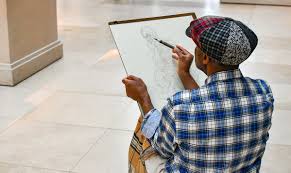This month, the Philanthropologist will explore some of the interesting changes in arts philanthropy in the U.S. For further reading on the history of arts funding, I recommend the excellent 2018 report by Grantmakers in the Arts and the 2015 report on funding for artists of color by the University of Maryland.

Donor Retention: More Important Than Ever:
- Annual fund level donors are dropping across all subsectors in the US, including arts and humanities. Gift volume is high in the arts and humanities, but retention is lower than in other subsectors.
- Arts philanthropy took a dive during the recession and has not yet made a complete recovery. This includes both government funds, private contributions, and corporate support.
Foundation Giving Is Up, Corporate Giving Is Down, Individuals Want to Be Patrons

- Foundations gifts are dipping. Foundations say making the case for arts funding is harder in the face of mounting human service needs.
- Corporate giving started rising in 2013, after dipping since 2000. C-suite interest in the arts and humanities is one of the strongest influences on corporate giving.
- The idea of being a patron is fashionable again. Philanthropists are focusing on long-term relationships with a creator or researcher and building a “Renaissance court experience” i.e. an environment in which the creators and researchers can flourish. This includes direct patronage by high-level donors to individual artists and online platforms such as Patreon for lower-level donors.
The Artist-preneur

- The idea of “arts as entrepreneurship” and arts funding as “angel investors” is gaining more publicity and support among individual donors. Examples include new pooled giving vehicles, gifts that focus on developing artists’ business skills and resources, and gifts that focus on the role of the arts in economic development.
- Artist-endowed foundations (AEFs) are an increasingly influential force in arts philanthropy. The value of AEF assets more than doubled in the five-year period of 2011 through 2015, rising 120 percent to $7.66 billion from $3.48 billion. In comparison, assets grew 40 percent in that period at national foundations.
Social Impact is Impacting Everyone

- Foundations and individuals are funding more arts and cultural organizations that closely engage with social problems. This trend has not been as prominent in higher ed giving–but recent gifts indicate that may be changing.
Returning Trends: Individuals Driving Arts Giving, Mostly to Large Organizations

- The bulk of U.S. arts philanthropy comes from individual donors. Foundation, government, and corporate support has shrunk since 2001 but individual support has grown slightly. The primary source of revenue for arts organizations is earned income (membership fees, investment income, etc.).
- The majority of arts funding from individuals and foundations is to museums and performing arts venues. The majority of all arts funding also goes to organizations with budgets over $5M.
About the Author:
Amelia Aldred is a lead analyst on the prospect research team at the University of Chicago and the administrator of The Philanthropologist. Amelia specializes in international and arts fundraising and has taught seminars on international philanthropy, industrial research, and internal communications at CASE (Council for the Advancement and Support of Education) and APRA (Association of Professional Researchers for Advancement). For more information about Amelia’s nonprofit experience, click here.